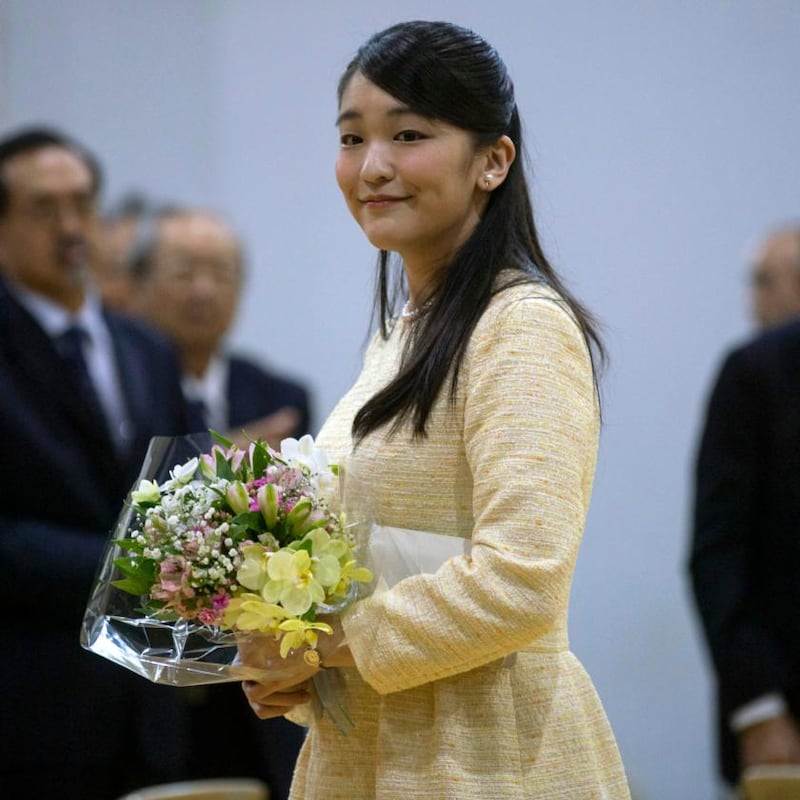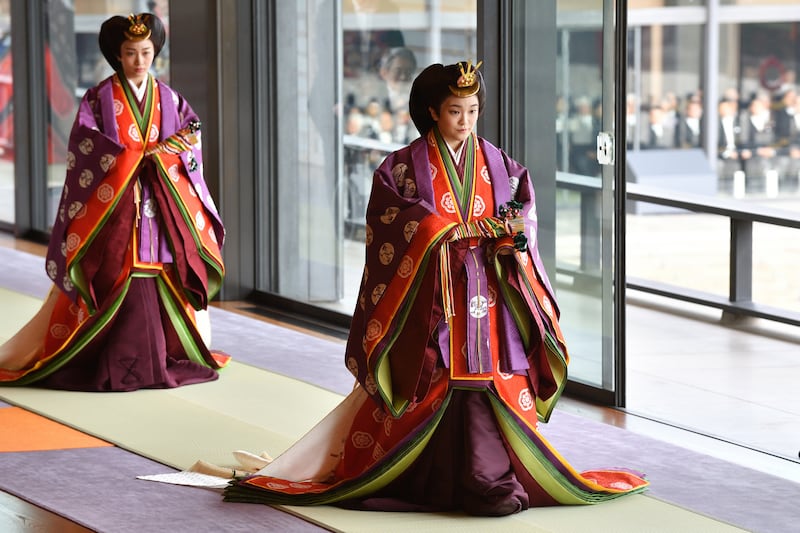Anyone who dreams of being a princess should probably have a chat with Princess Mako of Japan. On Friday, the agency that manages the affairs of Japan's royal family announced that the princess, the 29-year-old niece of Emperor Naruhito, would marry her fiance, a commoner named Kei Komuro, on October 26th. It has been a long time coming. The couple, who first met in college, have been engaged since 2017 – but getting to the chapel has meant running a bruising gantlet of media scrutiny and savage public commentary on Komuro's fitness to be the spouse of an imperial daughter.
The pressure on the couple has been so intense that the princess has been diagnosed with post-traumatic stress disorder, Japan's public broadcaster, NHK, reported. If you're expecting pomp and circumstance, prepare to be disappointed. There will be no royal wedding. Instead, Princess Mako intends to renounce her royal heritage and settle into a normal life in New York, where Komuro (29) works in a law office after studying at Fordham University in the city.

It's hard to blame her. Her engagement has been endlessly and disapprovingly dissected, and her family, citing negative public opinion, has expressed little public support for the match. The couple's wedding, originally planned for 2018, was pushed back after news reports that Komuro's mother owed $36,000 (€31,000) to a former fiance. Some of that money, the press said, had been used to pay for Komuro's schooling. The affair led to insinuations that Komuro was a gold digger, an image that he struggled to shake off. At the urging of his future father-in-law, Crown Prince Akishino, he released in April a 28-page document explaining the loan, and his lawyer later vowed that Komuro would pay it back. But the damage was long since done.
Japan's staid royal family is low on star power and has largely avoided the dramas surrounding the British royals. The family, the world's oldest royal line, has served only in a ceremonial capacity since the end of the second World War, and it tends towards carefully managed appearances and oblique statements. Princess Mako and Komuro are unlikely to appear with Oprah Winfrey or get a Netflix production deal, as did the world's most famous royal renouncers, Prince Harry and Meghan Markle. Hungry for gossip, Japanese tabloids find chum in even the smallest issue.
The most recent scandal is about a ponytail. After Komuro, who had last been seen with a mid-length boyish coif, was sighted in New York sporting long hair tied in the back, his new look became front-page news. The tabloids ran photos of Komuro’s head from every angle. Japanese Twitter exploded with scathing comments and newscasters tut-tutted the hairstyle as unbecoming of a princess’s beau. Seemingly fed up even before the latest hullabaloo, Princess Mako has reportedly decided to give up all of the trappings of royal life. Even in the happiest case, Japanese law decrees that women who marry commoners are to be pruned from the family tree. No woman may sit on the Chrysanthemum Throne, which must be occupied by a man from the male line of succession – currently, only the crown prince and his son qualify.

The same laws that will force Princess Mako out of the royalty also entitle her to official ceremonies marking her departure and a dowry of about $1.4 million (€1.2 million) to start her new life. Princess Mako will forgo both the ceremony and the payment. She is the first in Japan's royal family to do so since the end of the second World War. Instead, the couple will register their marriage in Tokyo and retreat later this year to New York, where Komuro recently began work at the Manhattan law firm Lowenstein Sandler and is awaiting his results on the New York bar exam. Princess Mako, who holds a Master's degree in art museum and gallery studies from the University of Leicester in England and is pursuing a doctoral degree at the International Christian University in Tokyo, has not announced her plans, although there has been speculation that she could find work in New York's art world. She has spent the last 5½ years working at a museum at the University of Tokyo.

The princess is far from the first woman to have sought an escape from the royal microscope. Empress Masako, a former diplomat educated at Harvard and Oxford, famously shied from the public spotlight and intense scrutiny about whether she would produce a male heir. Princess Mako will be the ninth woman from the Japanese royal family to marry a commoner since new laws governing the royal family came into effect after the second World War. In a 1965 interview with the Asahi Shimbun, a Japanese newspaper, Takako Shimazu, the youngest daughter of Japan's wartime emperor Hirohito, said that she had found peace during two years living in Washington, where her husband worked as a banker.
"I'm happier than when I lived in Japan," she said. "As a citizen, there is no mental pressure." The most important thing about the change, she said later, was that "I was able to live without garnering people's attention, quietly." – This article originally appeared in the New York Times









